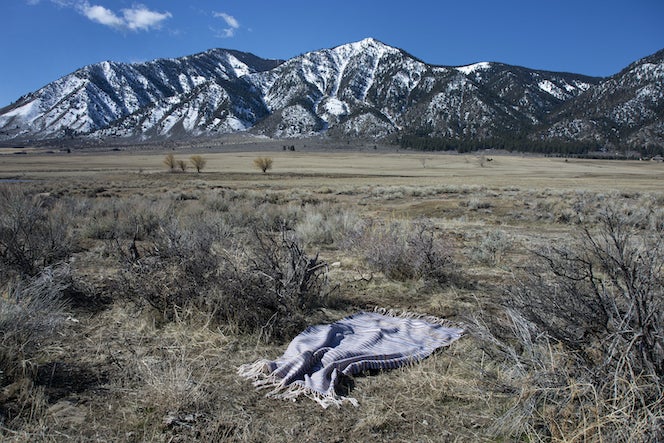
The Wilbur D. May Museum in Reno, Nevada is exhibiting “The Great Basin Murders,” handwoven memorial shrouds by Lily Lee, an associate professor in the Department of Art, Design and Visual Studies, with photographs by Carrie Quinney, photographer and multimedia coordinator in the College of Education.
More from the museum about the exhibition:
“The Great Basin Murders are a loose grouping of homicides spanning the 1970s to 1990s in which women were found killed and dumped along the region’s highways, most of which are still unsolved today.
Lee creates original weavings using data from each case including height, weight and age estimates as well as the date and GPS coordinates of when and where each of the unidentified victims were located. While this work is an attempt to broach the anonymity of unidentified human remains through devotional craft, the resulting woven panels remain visually austere illustrating the absence of information that characterizes many cold cases. By weaving these shrouds Lee seeks to give each of the victims a gesture of respect not previously afforded to them.
Through digital photography Quinney documents the woven shrouds at the sites where each victim was found, stylistically bridging crime scene documentation and landscape photography. These images position the shrouds as bodies, contextualizing the series in art historical movements considering violence against women from Renaissance and Baroque paintings to contemporary site-specific work, all against the backdrop of the ever foreboding, mysterious, and beautiful Western landscape.”
The Reno Gazette Journal featured the exhibition in a recent story: (paywall) “Their bodies were left in the Nevada desert. An artist is weaving new endings to their stories.”
Read more about Lee’s work in an earlier Update feature.